FRIENDS OF CLAINES CHuRCH
CLAINES FESTIVAL WEEKEND
The 1050th anniversary of a Church at Claines was celebrated in splendour 22nd-
POVERTY IN CLAINES
(South Porch-
As the major parish outside the City of Worcester Claines had its fair share of poverty through the centuries, but also benefited from numerous wealthy benefactors.
The South Porch still contains the poor boxes, where bread was left for poor parishioners.
There are numerous Poor Boards, particularly in the Tower, recording the various gifts and bequests made through the centuries. These range from land and cottages, gowns for the poor, through to annual parties for the school children and widows, and coal for the poor in winter.
Many of these charitable donations continue today in the Combined Charities of Claines. As a parish, Claines also contributes a significant proportion of its giving to today’s poor, both locally and internationally.
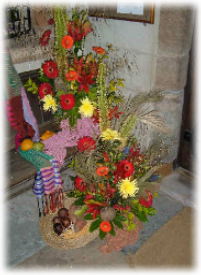

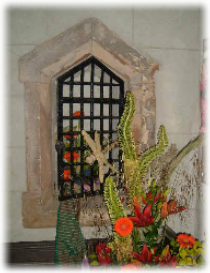
THE SLAVE TRADE
(South Door Pillar Julie Pearce)
The Atlantic Slave Trade lasted for over 400 years. This year we celebrate the bi-
However Slave Trading persisted in other nations and the British Navy took to the Seas for the next 50 years operating against Slave traders in West Africa.
The mortality rate for crews was 55 per 1000 men, mainly because of the tropical diseases they encountered.
Claines has two connections with the Slave Trade. The Reverend Thomas Biddulph was born in Claines in 1763. As Vicar of St Matthews, Bristol he became well known for actively supporting the emancipation of slaves in British territories in the 1820s, whilst opposing political equality for Catholics at home.
We also have a memorial to Mr John Thomas from Claines, Deputy Lieutenant of Worcestershire, Her Majesty's Commissioner for Suppression of the Slave Trade. He died on board "HMS Hydra" in January 1844 off the coast of West Africa.
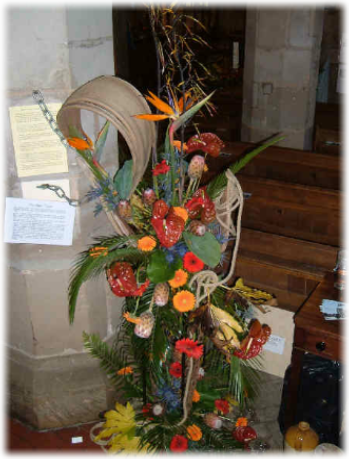
SURGEONS, SAUCE AND MEDICINE
(South Rear Window Joyce Wilde)
Claines parishioners have made their contribution to the world of medicine and are remembered through monuments, windows and tombstones in our church:
William Sandford was Surgeon to Worcester Royal Infirmary for twenty seven years in the 1700’s and famously wrote “A few practical remarks on the medicinal effects of wines and spirits”;
Henry Carden, F.R.C.S.E, Eminent Surgeon until 1872. “Carden’s amputation” is a technique of leg amputation still studied today;
Mr William Perrins, a Claines Chemist in the 1840’s, was the co-
Mr John Wheeley Lea, also of Claines, was the Inspector of Drugs for Worcester Royal Infirmary and Mayor of Worcester. He was the other co-
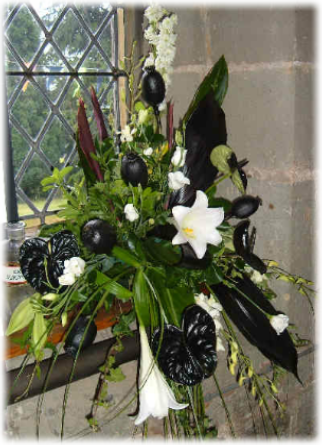

It would have contributed to the riotous festival wakes which featured in Claines Churchyard in medieval times, which included bull and bear bating, dancing and “drunken roystering”. This explains the original location of the parish stocks between here and the Mug House, last used in 1853 when “a cowman occupied this instrument of public disgrace for being paralytic drunk.”
On Sundays The Mug House now provides the location for “God’s Own Pub Club” our Senior Sunday School.
THE MUG HOUSE
(West Rear Window, Jane Clarke)
Through this window you can view “The Mug House”, the only Public House in a churchyard in England. Originally the Church Ale House the Mug House has stood for over 700 years and provided refreshment for Claines parishioners during that time.
Parish records recall "if it shall be necessary at any time to have a Church Ale for the maintenance of the said church, it shall be lawful for them to have the use of the whole House during their Ale
PUMPY THOMAS
(Bell tower, Daphne Sheldon & Linda Pike)
From the 1890’s until the 1940’s Thomas & Sons manufactured wind pumps in Claines. These were sold all around the world as “Climax” Windmills and won awards at the 1903 Royal Agricultural Society of England Show. The patent still exists and “Climax” windmills are now made in South Africa.
Both father and son were tremendous benefactors to Claines Church.
There are numerous memorials in the tower noting the gift of the Church Clock, the re-
Known locally as “Pumpy” Thomas he is well remembered and is immortalised by “Windmill Cottages” a row of houses erected for his workers, as well as by several windpumps still standing in the parish.
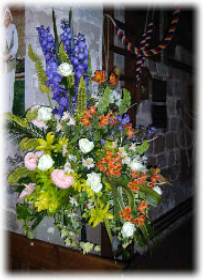
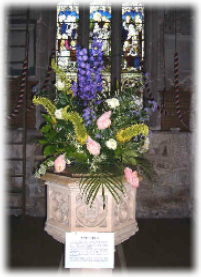

Bevere was also a refuge when the plague struck Worcester in 1637. Here the stricken populace were able to obtain food from the good folk of Claines, who would not venture to town with supplies. This lasted for six months.
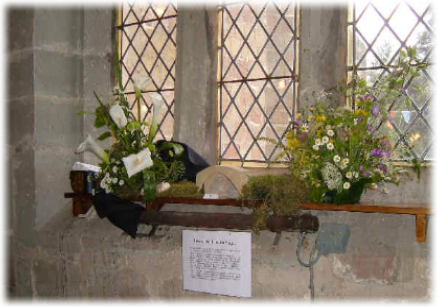
BEVERE ISLAND AND THE PLAGUE
(West Rear Window, Pat Harris)
Bevere Island is one of the few natural Islands in the whole of the River Severn and is within our parish.
When in 1041 the citizens of Worcester murdered the Earles sent to collect the Danegeld, King Canute sent the great lords Godwin, Leofric, and Siward to destroy the city. The citizens took refuge and all-
BEVERE HOUSE
(West Window, Sheila Richardson)
Bevere House is a fine Georgian House once the residence of the famous historian Dr. Treadway Nash.
It subsequently became the home of the Curtler family for several generations from 1837 until 1938. There are numerous windows and memorials in our church in memory of the Curtlers.
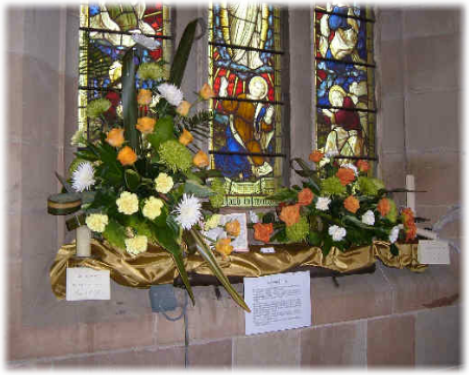
They were landlords of 700 acres of farmland within the parish. Thomas Gale Curtler was Deputy Lieutenant of Worcestershire and a well established Solicitor and JP, as well as a leading agriculturalist. His support for Claines Church was continued through his son Martin Curtler.
Lieutenant Frederick Curtler was the first Claines casualty in the 1914-
The house continues in much of its wonderful parkland setting as private apartments.
NORTHWICK MANOR
(North Rear Window, Jill Elliot & Pat Harris)
Northwick formed the original endowment given on its foundation by Osric to the See of Worcester and to King Oshare. The 7000 families who inhabited Mercian territory east of the Severn confirmed Northwick to the Bishopric between 692 and 704.
Northwick was the principle manor of the Bishops of Worcester for 12 centuries. It included over 3000 acres of land, water, fisheries, mills and the water transport of the Severn. It was here that the Bishops had their seat until this was superseded by Hartlebury. The Bishops, as Lords of Northwick, received the “Third Penny”, one third of the public revenue from the City of Worcester.
No trace of the Manor exists today and most of the fields are built upon. The “Slip”, originally a ford crossing the River Severn at Northwick remains, which is where Prince Edward crossed the river to defeat Simon de Montfort at the Battle of Evesham in 1265.
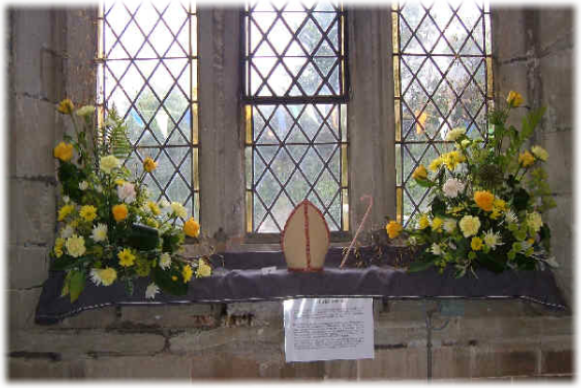
THE SALWARPE MILLS
(North Window, Pat Bridges)
The River Salwarpe forms a natural parish boundary for Claines, entering from Droitwich and joining the River Severn at Hawford in Claines.
Northwick Manor had three mills on the Salwarpe, mentioned in the Domesday Book: Porter's, Mildenham and Hawford. The miller at Hawford was not all that popular and was suspected of keeping a portion of flour for himself.
In 1089 a deed drawn up by Wulstan gave the mill of Mildenham to the Prior of Worcester and monks. He gave the mill "with the miller and his money".
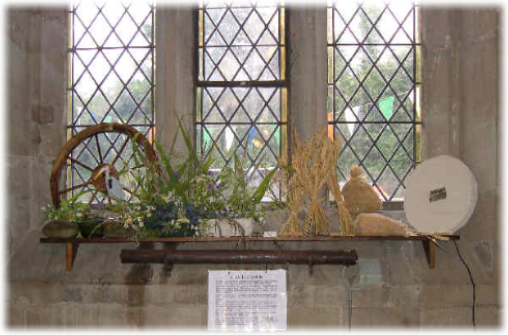
There was further mention of this mill in 1240, for it was then held in socage (socage tenure was by rent and also by virtue of certain services like providing fodder for the horses which brought the corn to be ground). At the time, Maurice and John were tenants, the former paying 10/-
The eels were much appreciated and the millers had to send 30 "sticks" annually to the Monastery at Worcester.
All Mills survive, Hawford as a Campsite, Porter’s and Mildenham as private residences. The last time corn was ground at any of the Mills was in the 1940’s at Mildenham, known locally as “Bills Mill” on account of the Bills Family who lived there for generations.
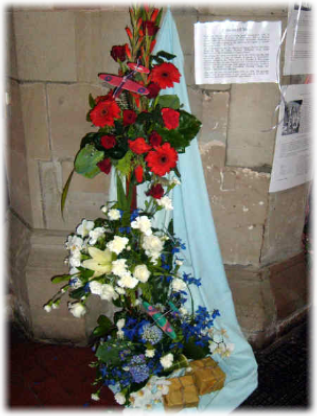
PERDISWELL HALL
(Lectern, Pat Harris)
Perdiswell Hall was one of Claines great houses since 1160. In 1280 it was owned by Cecily de Perdiswell; 1485 by Thomas Acton; 1640’s by John Hammond (Traitor Hammond, physician to James I and who assented to the execution of Charles I), and the Wakeman family in the 1800’s.
The Wakemans became the patrons of Claines Church; Sir Henry Wakeman and Sir Offley Penbury Wakeman being major benefactors to the restoration of Claines Church.
The Perdiswell Estate was broken up in the 1870’s but the Hall continued under a range of owners. It served as Worcester’s wartime airfield in the 1940’s and as a Prisoner of War Camp immediately after the war.
Prisoners were welcomed to worship at Claines and the parish sent food parcels to prisoners’ relatives during the Berlin Airlift. Friendships between Claines and Germany still exist from this time.
The Hall fell into ruin and burned down in 1956. The grounds remain now as allotments, a golf course and as a home for numerous sports and entertainment organisations.
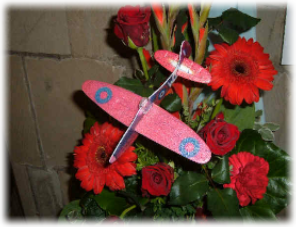
CHILDREN IN CLAINES
Children are a very important part of our Ministry at Claines.
We welcome children of all ages to be baptised. The youngest are then catered for through the “Little Fish Club” and Sunday School. Older children within the church are part of our choir, bell ringers, servers, sides-
In addition we have close links with Rainbows, Brownies, Guides, Beavers, Cubs and Scouts, all of whom join us for our monthly all-
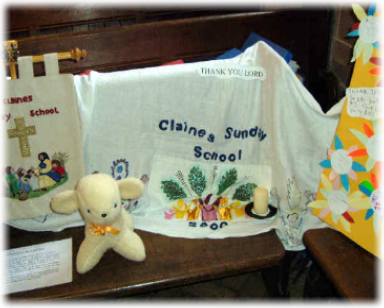
Within the parish boundaries we have two pre-
HAWFORD LODGE
(South Window, Joan Bull)
Hawford Lodge is one of Claines’ several grand Georgian Houses, now home to “King’s Hawford” school. It stands in the hamlet of Hawford in the corner of our parish, bordered by the River Severn and River Salwarpe.
During the late 1800’s, under the ownership of Frederick Ames, it was the home of the Worcestershire Hunt Kennels. It continued as a private residence with extensive land and gardens until a private school was started there in 1955.
It is now a flourishing independent school for 2-

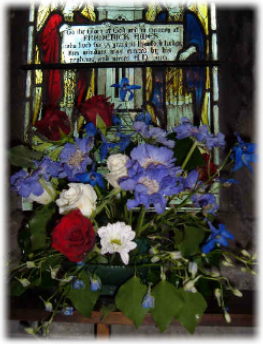
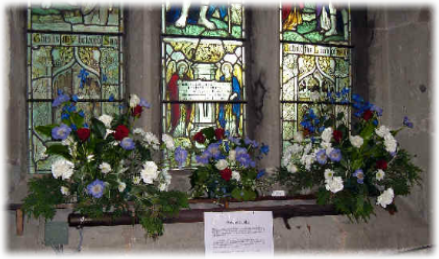
WILLIAM WORDSWORTH & FRANCES FERMOR
(South Window, Jill Elliott)
In Claines there is a handsome memorial to Frances Fermor. On her death William Wordsworth composed an “Elegiac Stanza” entitled “Cenotaph” which he addressed to Sir George Howland Beaumont, the brother-
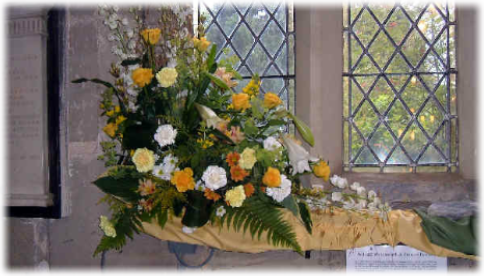
CENOTAPH
By vain affections unenthralled
Though resolute when duty called
To met the world’s broad eye,
Pure as the holiest cloistered nun
That ever feared the tempting sun
Did Fermor live and die.
This tablet hallowed by her name,
One heart-
But if the pensive gloom
Of fond regret be still thy choice,
Exalt they spirit, hear the voice
Of Jesus from her tomb!
“ I AM THE WAY, THE TRUTH, AND THE LIFE”
In 1862 St Stephen’s parish was created and a church built there, the first Vicar being Thomas Gale Curtler, of Bevere Knoll, Claines.
In 1885 St Barnabas Church was built to serve the growing railway based population of that suburb.
The current parishes work and worship together regularly as part of the Worcester East Deanery.
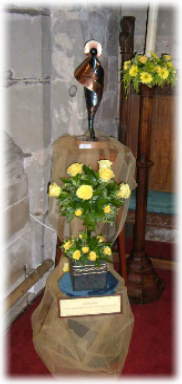
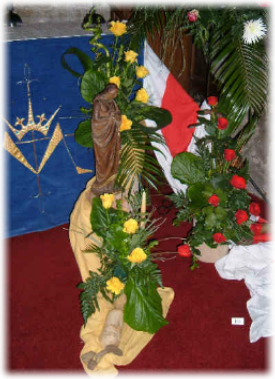
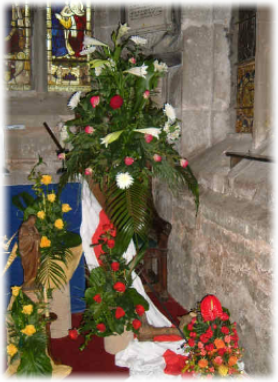
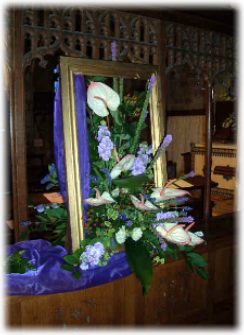
CLAINES’ DAUGHTER CHURCHES
(St Georges, Sheila Briggs& Janice Tovey; St Stephens, Val Leighton; St Barnabas, Sheila Bright)
Originally a parish that stretched into the City of Worcester, Claines has seen numerous daughter parishes arise within its boundaries as the City and its population have increased.
St Mary Magdelene (Sansome Walk) was within the parish and attached to an ancient Nunnery in the current Tything.
A chapel, Claines St George’s, was opened in 1829 to support the suburb which was “in the vicinity of a large city and was attacked by dissent of every kind”. This was rebuilt as St George’s in 1850.
ST HELEN’S, OUR MOTHER CHURH
(Rev. Jennie Hayward)
St Helen’s Church in Worcester is the mother church of Claines. It stands on the site of the earliest church in Worcester, dating from the Roman occupation. Claines was originally annexed to St. Helen's, which was a huge parish. St Helen’s was the main church in the area before Bishop Bosel established the Minster of St Peter on the site of Worcester Cathedral in 680. The rural parish of St Helen’s covered Martley, Little Witley, Holt, Claines, Huddington and Whittington, to name but a few of the places.
Bishop William de Blois of Worcester (1200’s) often quarrelled about Church property, and especially about the great parish of St. Helen's, with the Cathedral Prior. They decided that the property of St. Helen's on the west side should go to the Prior, whilst St. Helen's itself and the new vicarage of Claines should go to the Bishop.
In 1097 Fritherick, the priest at St. Helen's set forth what belonged to Claines Church : “In Northwick belonged to the said church all the chapels in Bishop's See: Warndon, Hungerlepe, Hudington, Churchill, Witenton".
By the time of the Second World War, St Helens had ceased to be used for worship and was put to various uses until, in 1956, it became the County Record Office.
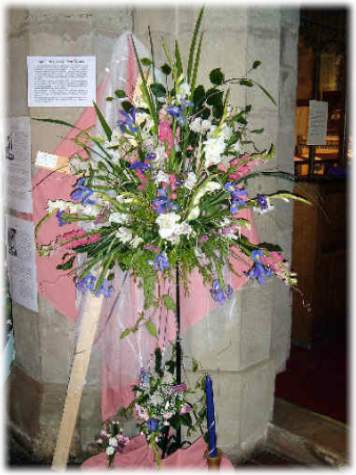
SIR EDWARD ELGAR & SIR ADRIAN BOULT
(Chancel, Jean Agnew & Evelyn Sansome)
Sir Edward Elgar was born 150 years ago, in 1857.
In Claines we have the grave of his mother’s parents, Joseph and Esther Greening. They lived in Ombersley Road in Claines, working as agricultural labourers. Whilst living in Claines their daughter, Ann, met Elgar’s father William and they were married in 1848.
As a young man Elgar regularly used to visit his grandparents grave in the churchyard where he would sit and study the scores of Beethoven.
In future years he became a great friend of the Whinfield Family of Severn Grange, Claines. His letters recall the wonderful musical evenings held at the Grange, and how he walked the lanes of Claines to take his new wife to visit his grandparents grave.
Sir Adrian Boult, a famous conductor and friend of Elgar, was the President of Claines Musical Society in the 1920’s, whilst being the conductor of the City of Birmingham Orchestra.
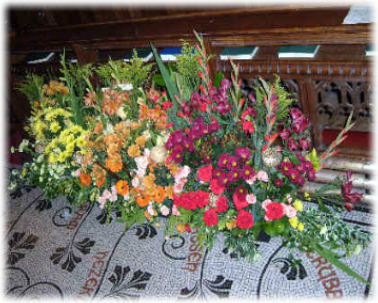
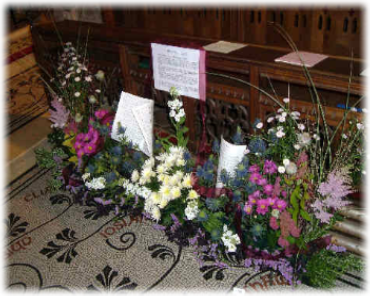
HINDLIP HALL & THE GUNPOWDER PLOT
(Catherine Chapel Sybil Shrimpton)
At one time the parish of Claines stretched well into Hindlip, now a separate parish.
In the 1500’s Hindlip Hall was owned by the Habington family, who subsequently became conspirators in the Gunpowder plot.
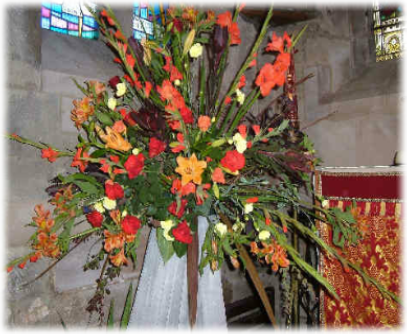
After the fateful night of November 4th 1605 many of them fled to Hindlip and hid in the priest holes and passages of the great house. They hid there for several weeks, some until January despite the house being constantly searched. However all were caught and most hanged. Thomas Habington was reprieved the day before his hanging was due, on condition that he never again left the County of Worcester.
The Hall is now the Headquarters for West Mercia Police.
AGRICULTURE THROUGH THE AGES
(Catherine Chapel, Frances Harris)
Claines parish has reduced in size as Worcester has developed, but was at one time mainly agricultural.
In Domesday times it provided meat, malt and fish for the Bishops of Worcester. In the early 1800’s 85% of its 3,500 acres were farmed. During the Second World War Claines farmers provided and delivered milk for many of the inhabitants of the city.
Soils range from heavy clay, said to give our parish its name, through to some of the best sandy loams in the county.
Housing development has all but taken the great agricultural estates of Bevere, Northwick and Perdiswell and fulltime farmers in Claines have declined from more than thirty in the 1940’s to below five. The families of Sansomes, Phillips and Gwillam carry on Claines’ agricultural production, having done so for several hundred years.
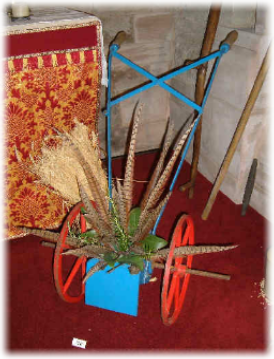
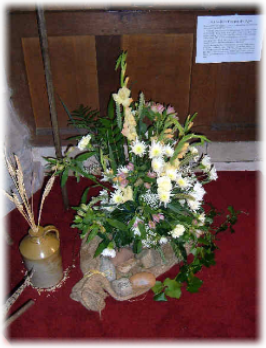
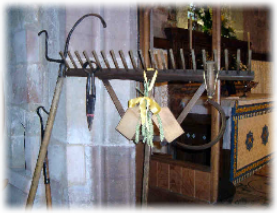
SAINT OSWALD
(Barbara Padbury)
The son of noble Danish parents, Oswald became Bishop of Worcester in 962.
In 964, by a Charter of King Edgar, the Manor of Northwick became part of the newly-
In 972 Oswald became Archbishop of York but remained as the main patron of Worcester.
Oswald was the reformer and re-
He died and was buried at Worcester where his shrine was held in great honour until the Reformation. St. Oswald and St. Wulstan are regarded as the patrons of the Cathedral.
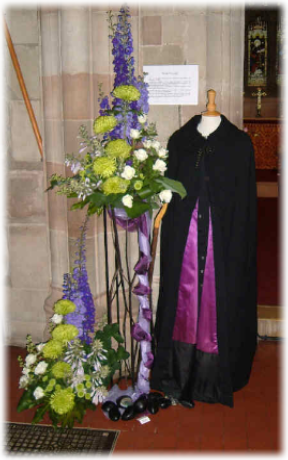
SAINT WULSTAN
(Maureen Gillman)
Born in 1008, Bishop Wulstan was the builder of the first church at Claines. He built churches in all his Manors, and his church at Claines was originally called the Church of Northwick.
Wulstan was a military strategist (he went North with Harold prior to the Battle of Hastings), property tycoon (he also owned 12 villages in Somerset) and a philanthropist, responsible for the Commandery hospital in Worcester.
He was said to possess sanctified common-
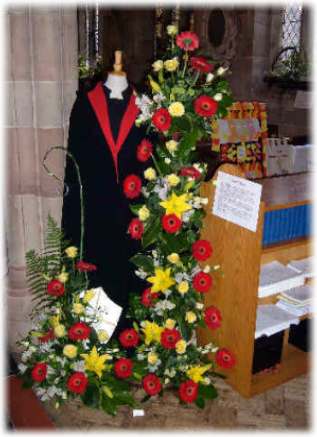
The date of his church at Claines is uncertain, but probably between 1075 and 1095. Claines was originally a chapelry annexed to St. Helen's. It was first called Claines church in 1097.
Wulstan died in 1095 and was buried at Worcester Cathedral. He was canonised in 1203.
THE REFORMATION IN CLAINES
(North Porch, Wendy Galassini)
Until the Reformation in 1533 Claines had a Chantry Chapel, the Chantry of the Blessed Virgin, now known as the Lady Chapel.
In this Chapel parishioners paid for prayers to be said for the souls of the dead, to get them to heaven. In those Catholic times the more money you paid the better the prayer and better the chances for your deceased loved one!
In 1527 Henry VIII wished to divorce his wife, Catherine of Aragon and marry Anne Boleyn.
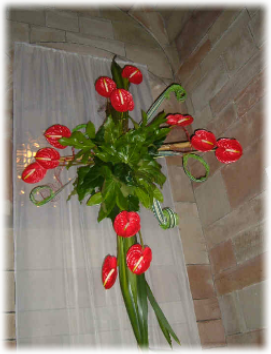
This was not allowed within the Catholic Church and would mean that Henry’s soul would never get to heaven. Henry’s solution was to lead a break with the Catholic church, which he did in 1533, establishing the protestant Church of England. He then dissolved the monasteries and banned Catholic practices, including paying for prayers. Many monasteries and churches were reduced to ruins as a result of this.
Claines probably lost some of its wealth and silver from this time but we have only one visible reminder. The old entrance to the Chantry chapel on the South wall can be seen, clearly blocked up from the time of the Reformation.
OUR NORMAN CHURCH REBUILT
(North Porch, Alison Boswell)
Claines’ original Norman Church was rebuilt in the 15th century. Little of the original remains other than the Norman Font and a Norman Pillar in the tower.
A new church was built “around” the old one in stages, much of the old church being used in the tower foundations. The north and south chapels were added in the 16th century.
In the early 19th century the South Porch was added along with a new font and galleries for the congregation.
A major restoration, under the architectural design and guidance of Sir Aston Webb took place in 1886 which included removing the galleries and adding the north aisle, porch and vestry.

THE LYTCH GATE
The lytch gate was where coffins used to be opened to see if the corpses were “buried in wool” During the 14th and 15th centuries the protection of this national product was of great importance, and an act was passed in the reign of Charles II for the express purpose of increasing the consumption of English wool).
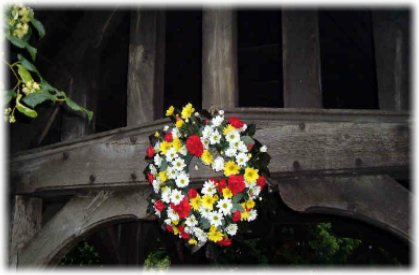
If the body in the coffin was wrapped in wool a tax had to be paid.
Nowadays it often serves a far more picturesque purpose acting as an attractive and historic backdrop for wedding photographs.
The current Lytch gate was built in the early 1900’s and is inscribed “In Christ Shall All be Made Alive”.
CLAINES’ BOY BISHOP
(Pulpit, Jill Elliott)
The Boy Bishop was a widespread custom of the Church in the Middle ages. The Boy Bishop takes office on the feast of St Nicholas (December 6th), the patron Saint of Children, and his authority lasts until Holy Innocents Day (December 28th ).
The main idea was to impress upon the children the honour and dignity of the Priesthood, the Boy Bishop being held in deep veneration by both adults and children.
Claines has installed a Boy Bishop every year since 1971. The Claines Boy Bishop has an alb, cope, mitre and stole made by various congregation members over the years. He wears a cross and ring and carries the Claines Crosier (A medieval silver Crosier head, found during renovations in the Mug House at Claines in the 1940’s and presented to the then Bishop of Worcester), on loan from the Lord Bishop. He is chosen from the Choir by the churchwardens.
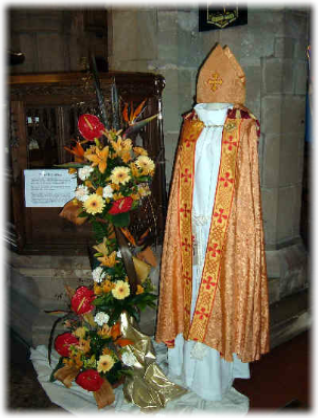
Credits:
Photographs, Geoff Sansome and Kay Bamford-
Historical Notes, Geoff Sansome





